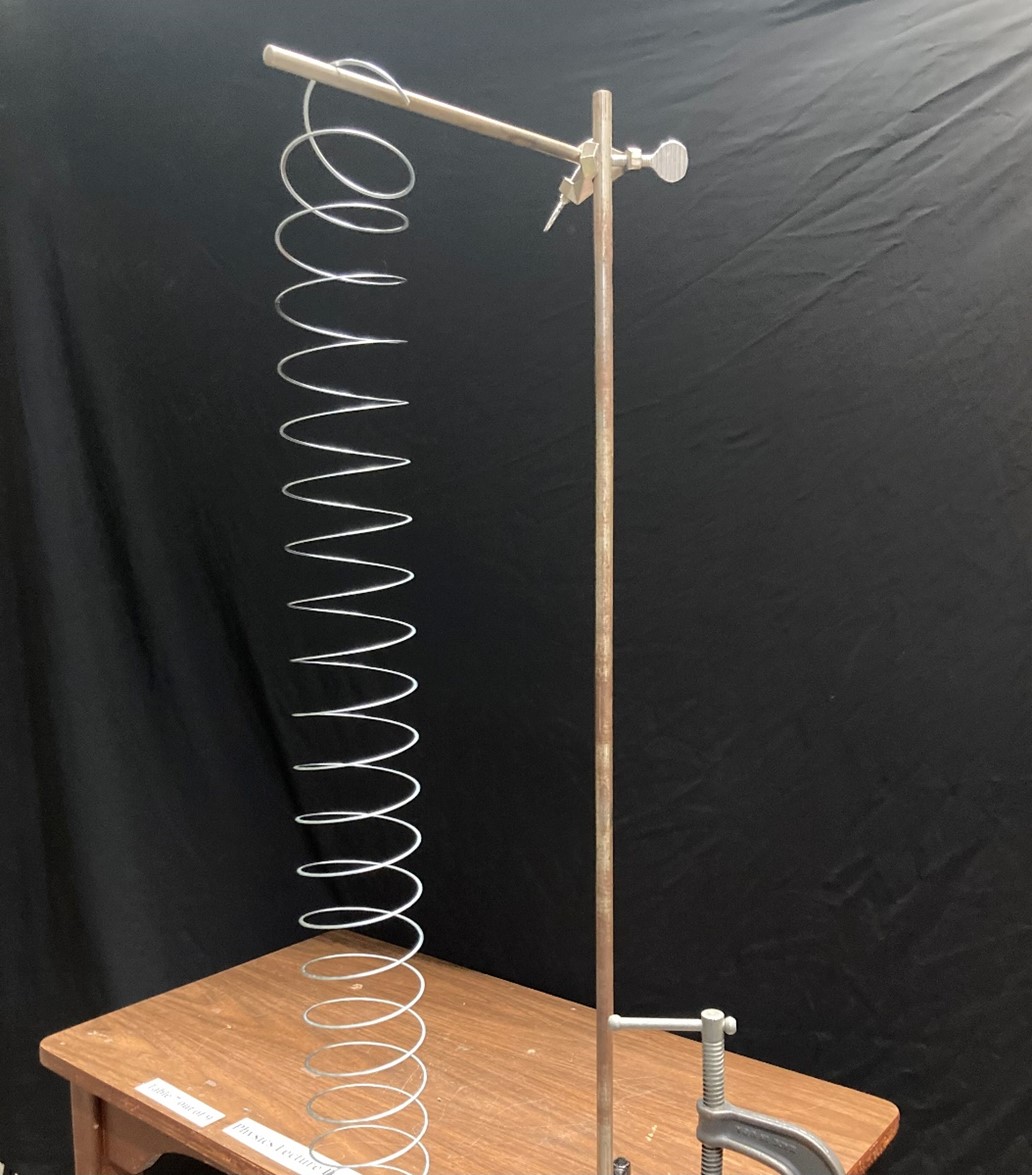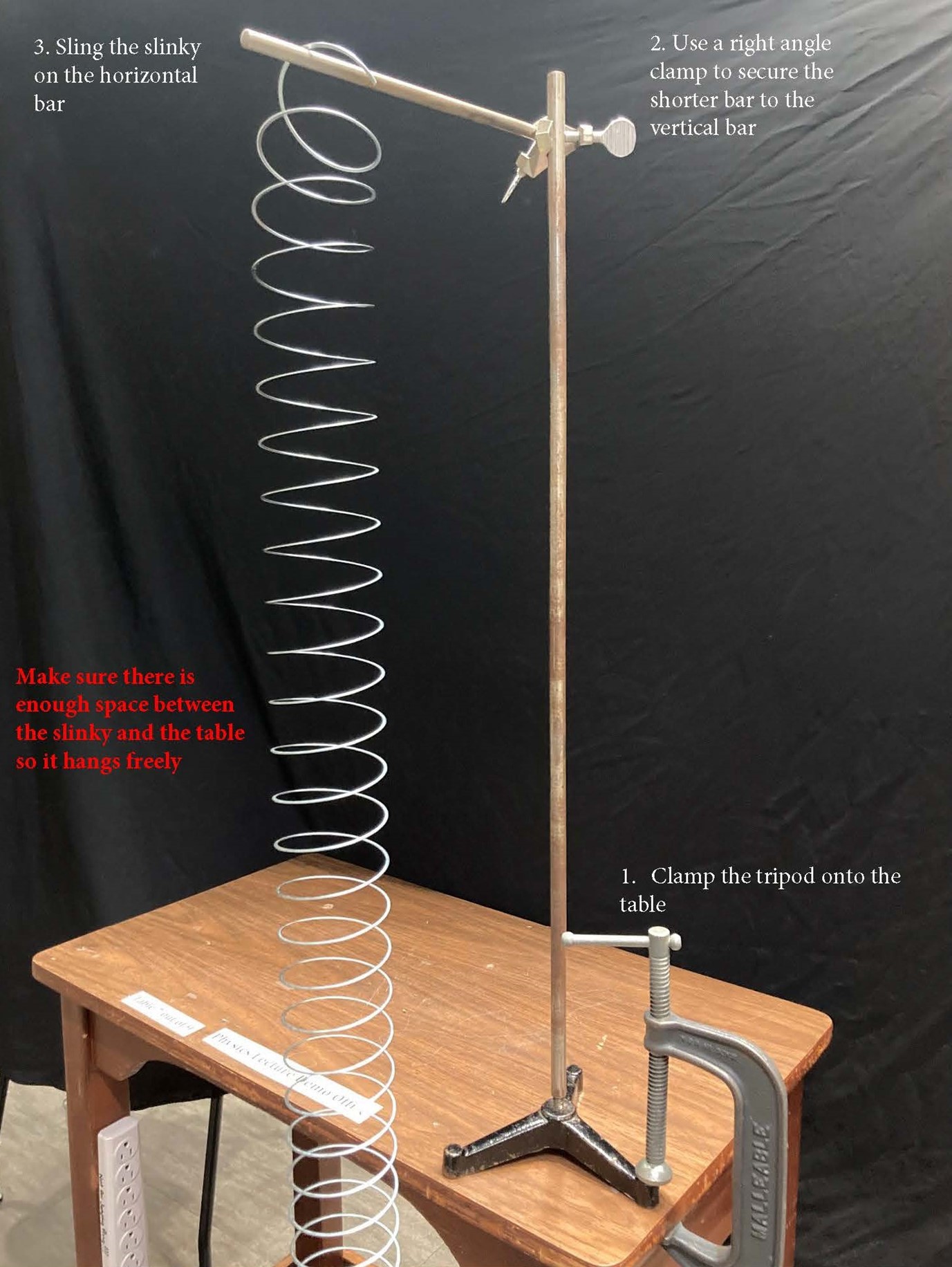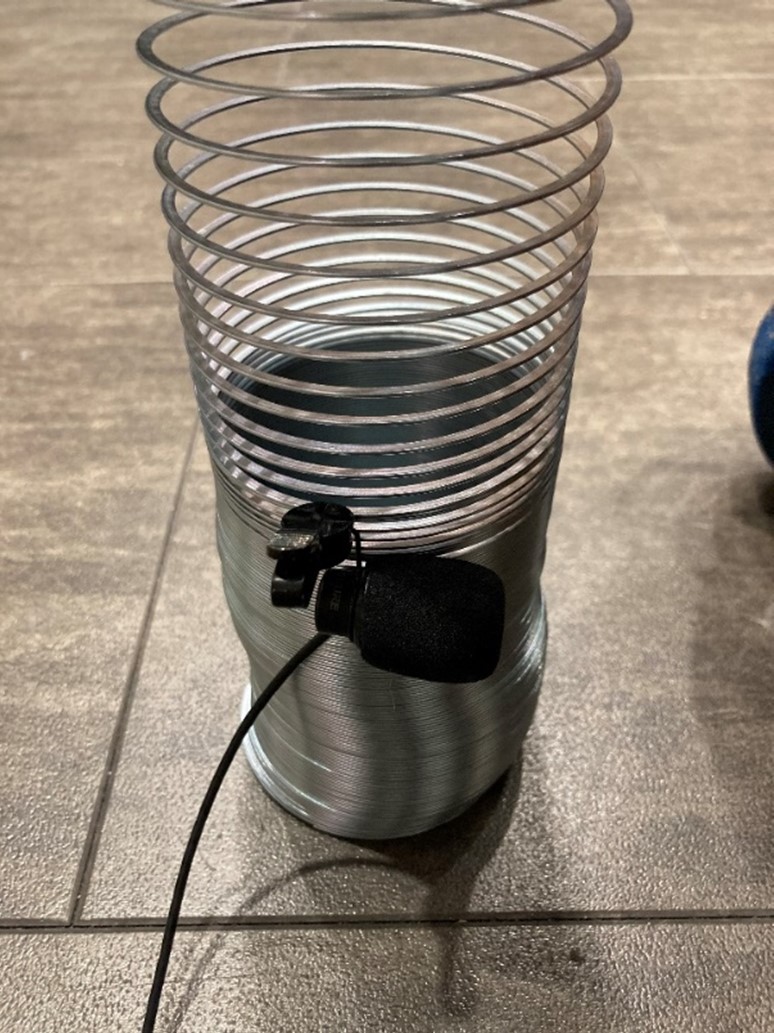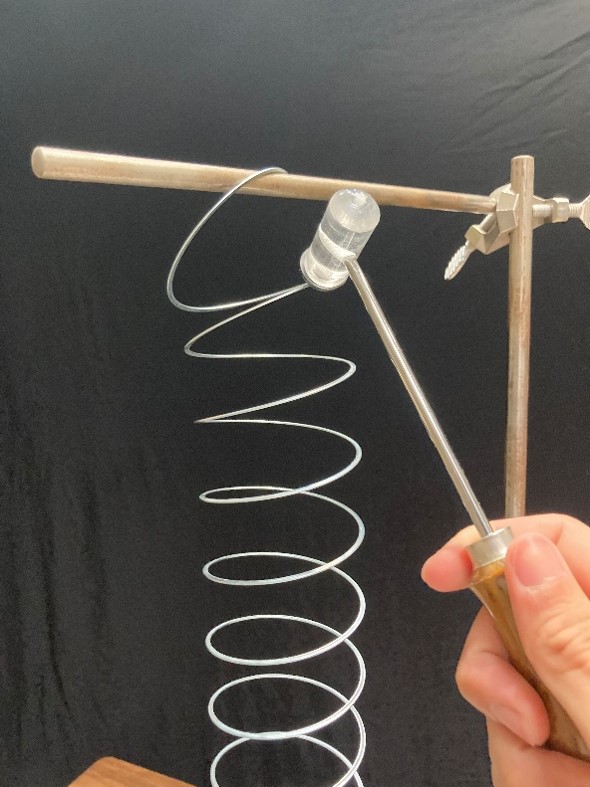3D50.10 • Wave Dispersion: Sound Waves Propagating Through Slinky
Instructions for Professor:
- Turn on the lecture microphone.
- Strike the top of the slinky with the rubber mallet provided. Wait for a few seconds before striking the slinky again (allow it to come to rest by letting the initial wave dissipate or hold on to the slinky to stop it from undulating).
Instructions for Demo Staff:
- Clamp the tripod onto the table.
- Use a right angle clamp to secure the shorter bar to the vertical bar.
- Sling the slinky on the horizontal bar.
- Note: Make sure there is enough space between the slinky and the table so it hangs freely.
- Attach the clip-on lecture microphone to the bottom of the slinky (right about where it begins to collect). Make sure that the microphone is clipped on to a single rung of the slinky and is secured.
- Test the demo to make sure the microphone is secured and does not rattle against the slinky when waves are propagating through the slinky: strike the top of the slinky with the rubber mallet provided and verify that you have a clean-sounding laser blaster.
- Once you are finished, turn off the lecture microphone and place it on the table on which the demo is set up on
Concepts Conveyed:
- The angular frequency and the wave number are related by dispersion relation. If the relationship is linear, then the wave is classified as nondispersive. If the relationship is nonlinear, then the wave is classified as dispersive.
- Dispersive waves exhibit the unique property where the speed of individual wave components depends on their angular frequency. In the case of sound waves propagating through the metal in a slinky, the waves are dispersive.
- We can confirm this by striking a slinky to generate a sound wave that travels through the metal and listening to them. We find that the higher frequency wave components travel faster than the lower frequency wave components, creating the unique laser blaster sound from Star Wars (in fact, this is exactly how the legendary Ben Burtt came up with this iconic sound).
Picture shows demonstration used at the University of Texas at Austin
Last updated on March 20, 2024




